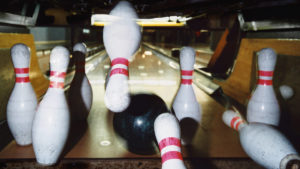Special Report: Red Mountain has identified more target trends at its Mount Maitland gold project in WA as it prepares to kick off drilling.
The new prospective trends were identified after a review of historical exploration work carried out in the project area.
Red Mountain Mining (ASX:RMX) says that of the 157 historical rock chip samples across the tenure, 36 have shown grades greater than 0.5 grams per tonne (g/t) gold with a maximum of 59g/t gold.
It has engaged recognised geochemist Nigel Brand to conduct a review of geochemical data across the entire tenure package. Interrogation of historical exploration data is also continuing.
The company is also a step closer to drilling with the submission of a program of works to the Department of Mines, Industry Regulation and Safety while a heritage clearance process has commenced.
Red Mountain noted that the drill program is being finalised and is likely to initially focus on methodically testing the Lenanphyl and Maitland South trends, which have demonstrated gold mineralisation in the past and are surrounded by historical pits and shafts.
Target generation work will also be undertaken on site to better refine targets such as Jacia as well as the southern portion of the tenure where a large gold-in-soil anomaly exists.
Historical gold potential
Mount Maitland, acquired by the company in early July, is at the boundary of the Yilgarn (Archean) and Capricorn Orogen (Proterozoic) cratons which are highly prospective for gold and copper deposits.
Gold was first discovered at Mount Maitland in 1898, and historic production averaged a very tidy 19 g/t of gold.
The project area is also within 50km of several major operating mines, including Sandfire Resources’ (ASX:SFR) De Grussa and Monty operations, and Westgold Resources’ (ASX:WGX) Fortnum mine in the Murchison goldfield.
Modern exploration at Mt Maitland has comprised limited, widely spaced, shallow and selective drilling, which provides scope to expand the prospectivity of the project significantly.
Red Mountain highlighted the Lenanphyl trend as an example, noting that historical drilling potentially tested directly north of the workings rather than along the structural trend, which may have resulted in this drilling not fully testing the entire prospective sequence.
Its analysis to date has also identified several untested trends including a 4km wide zone between the Jacia and Lenanphyl structures that contains high grade gold rock chip samples.
This story was developed in collaboration with Red Mountain Mining, a Stockhead advertiser at the time of publishing.
This story does not constitute financial product advice. You should consider obtaining independent advice before making any financial decisions.
You might be interested in












